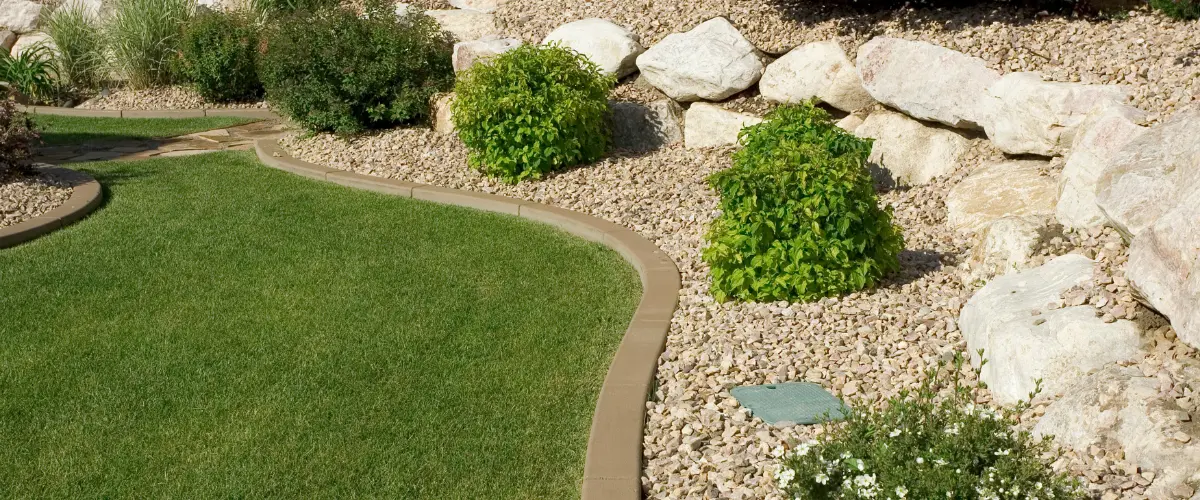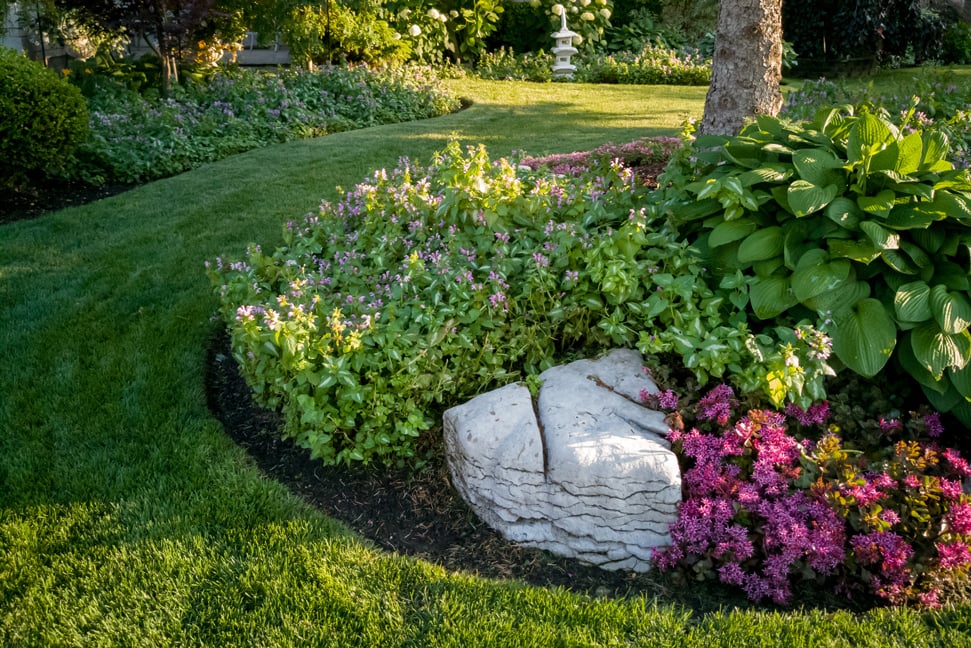Landscapers Las Vegas Teams Focusing On Both Residential and Commercial Spaces
Landscapers Las Vegas Teams Focusing On Both Residential and Commercial Spaces
Blog Article
The Value of Recognizing Different Kinds Of Landscaping for Your Garden
Comprehending the different types of landscaping is a necessary element in crafting a garden that not only reflects personal taste yet additionally fulfills environmental requirements. Each landscaping style-- be it formal, home, lasting, or metropolitan-- offers distinct advantages that can significantly affect the general health and wellness and looks of your outside space.
Benefits of Landscape Design Understanding
Understanding the fundamentals of landscape design provides numerous advantages for both amateur and skilled garden enthusiasts alike. A strong grasp of landscape design concepts enables people to create functional and aesthetically appealing exterior areas that align with their individual choices and the details attributes of their gardens.
One significant benefit is boosted ecological wellness. Knowledge of sustainable techniques and native plants permits gardeners to grow communities that advertise biodiversity while decreasing the need for chemical plant foods and pesticides. Furthermore, understanding soil types and drain can cause healthier plant growth and lowered erosion.
Landscape design expertise also improves the visual value of a residential or commercial property. By finding out about layout components such as shade, range, and texture, garden enthusiasts can create cohesive and inviting landscapes that boost aesthetic appeal. This not only raises individual enjoyment however can additionally boost property value.
Additionally, notified garden enthusiasts can conserve time and resources. Acknowledging the right plants for certain problems, such as light and dampness degrees, ensures that efforts are not squandered on inappropriate choices. Inevitably, a detailed understanding of landscape design equips people to make educated choices, promoting a much more satisfying horticulture experience.
Summary of Landscape Design Types
Landscaping encompasses a variety of styles and methods, each tailored to fulfill the one-of-a-kind demands and choices of garden enthusiasts. Comprehending these diverse types is essential for creating an outdoor room that straightens with specific tastes and environmental considerations.
One popular type is traditional landscaping, identified by organized layouts, well-defined flowerbeds, and using in proportion plantings. This design usually highlights a sense of order and harmony within the yard - Landscaping Company. In comparison, naturalistic landscaping focuses on resembling the appeal of nature, using organic kinds and native plants to create an extra unwinded and informal setting
Lasting landscaping has actually gotten traction, advertising green methods that conserve water and minimize chemical use. This method commonly incorporates xeriscaping, which makes use of drought-resistant plants suitable for dry environments. Additionally, city landscape design addresses the obstacles of limited room in city atmospheres, usually using upright gardens and rooftop rooms to make best use of greenery.
Official Landscaping Described
Identified by its precise layout and structured aspects, official landscape design develops an atmosphere of sophistication and sophistication in outdoor areas. This design stresses symmetry, geometric shapes, and distinct lines, frequently including polished hedges, topiaries, and orderly flower beds. The general result is a polished and refined atmosphere that draws attention to architectural functions and boosts the elegance of the surrounding landscape.
In formal landscaping, paths are generally straight and may be lined with uniform products such as block or rock. These courses usually lead to centerpieces such as fountains, statuaries, or decorative trees, even more improving the structured nature of the style. Color schemes often tend to be extra limited, concentrating on harmonious mixes that advertise a peaceful ambience.
Water attributes in formal landscapes are typically developed with precision, typically showing up as circular or rectangle-shaped swimming pools. The cautious placement of plants is important, with types chosen for their ability to keep a clean look throughout the seasons. In general, formal landscape design is suitable for those that appreciate order and elegance, providing a timeless visual that can dramatically boost the value and allure of outdoor spaces.
Cottage Yard Attributes
Cottage yards often evoke a sense of beauty and whimsy, mixing a variety of plants in an apparently slipshod yet unified plan. Defined by their rich, informal design, these yards normally feature an eclectic mix of blooming perennials, annuals, vegetables, and natural herbs. This varied growing not only develops visual passion but additionally attracts valuable insects and advertises a balanced environment.
A vital attribute of cottage yards is their use conventional products and frameworks. Stone pathways, rustic fence, and wood trellises are commonly integrated to boost the garden's charming charm. In addition, the inclusion of seating areas, such as arbors or benches, urges relaxation within this peaceful setting.
Shade plays a considerable role in home yards, with a focus on soft pastels and lively hues that evoke a feeling of fond memories. Blossoms like roses, hollyhocks, and foxgloves are staples, typically intermingled with aromatic natural herbs such as lavender and thyme.
Home gardens show an approach of welcoming nature's changability, leading to a distinct and inviting space. By prioritizing biodiversity and aesthetic charm, they create a picturesque setup for both yard fanatics and laid-back onlookers alike.
Lasting Landscaping Practices
Integrating sustainable landscaping techniques is essential for creating eco-friendly gardens that flourish while lessening their environmental impact. Landscaping Company. Lasting landscaping focuses on the efficient use sources, promoting biodiversity, and boosting the natural Get the facts surroundings
One key practice is picking native plants, which are well-adapted to local problems and need less water, plant food, and pesticides. This not only conserves sources however also sustains regional wildlife, including pollinators. Applying water-efficient watering systems, such as drip irrigation or rain harvesting, better saves water while guaranteeing that plants receive ample wetness.

In visit homepage addition, reducing yard locations and incorporating hardscaping elements can lessen upkeep and resource use. These methods advertise an even more sustainable landscape that needs less inputs and gives ecological benefits. By welcoming these approaches, gardeners can produce rooms that are not just gorgeous however additionally add favorably to the environment, fostering a harmonious equilibrium in between nature and human activity.

Final Thought
In conclusion, an extensive understanding of numerous landscaping kinds is essential for developing an aesthetically pleasing and ecologically lasting garden. Inevitably, embracing diverse landscape design methods cultivates a harmonious connection between outdoor rooms and their settings, promoting long-lasting ecological balance.
Recognizing the different types of landscaping is a vital element in crafting a yard that not only reflects individual taste yet additionally meets environmental requirements. Each landscaping style-- be it formal, home, lasting, or city-- supplies distinct benefits that can considerably influence the general health and aesthetic appeals of your exterior space. In comparison, naturalistic landscape design concentrates on mimicking the appeal of nature, utilizing organic forms and indigenous plants to create an extra kicked back and informal environment.
Additionally, metropolitan landscape design addresses the challenges of restricted site area in city atmospheres, usually making use of vertical gardens and roof spaces to make the most of greenery.
In final thought, a detailed understanding of various landscape design types is essential for creating a cosmetically pleasing and eco lasting garden. (Landscape)
Report this page